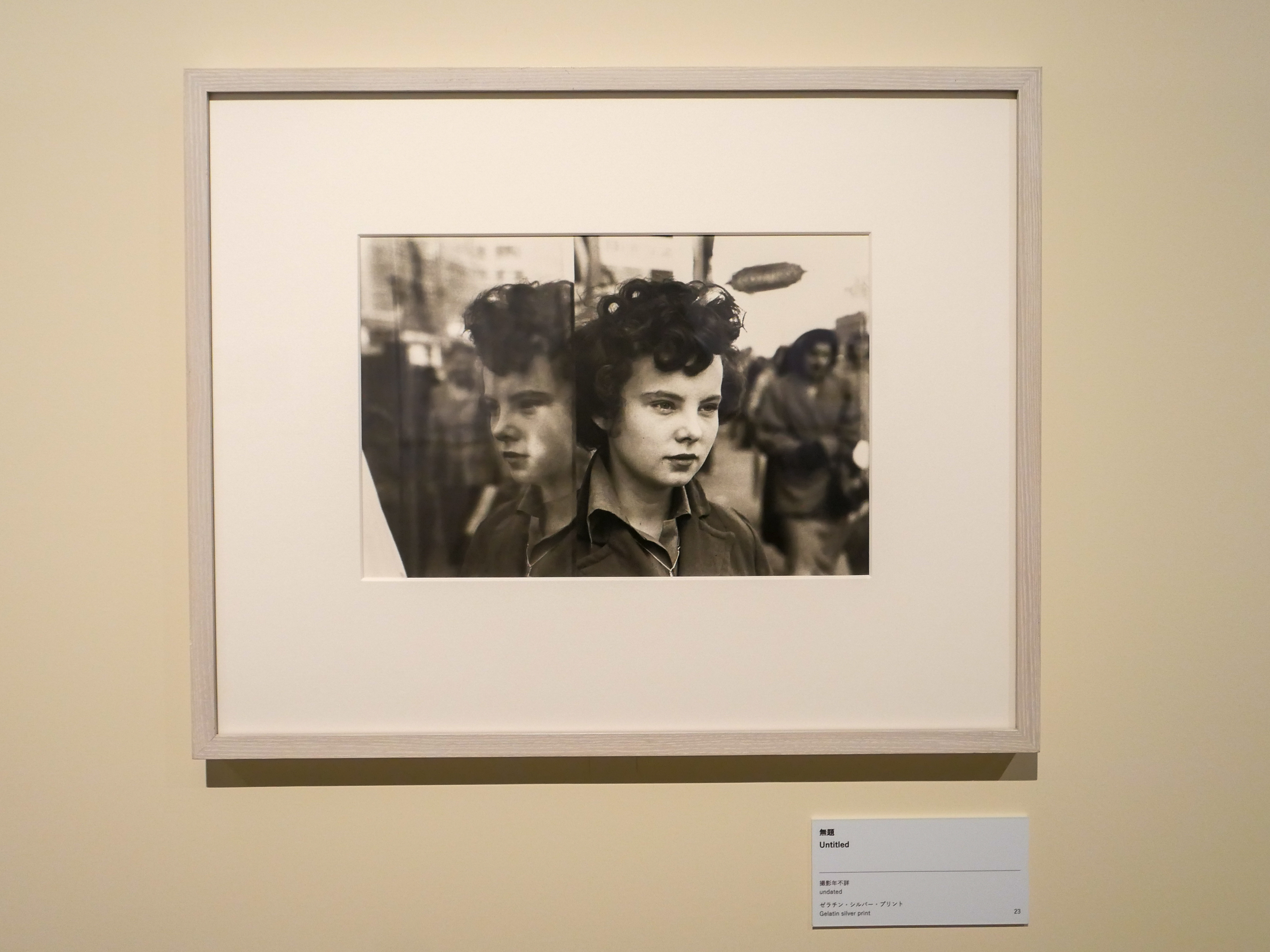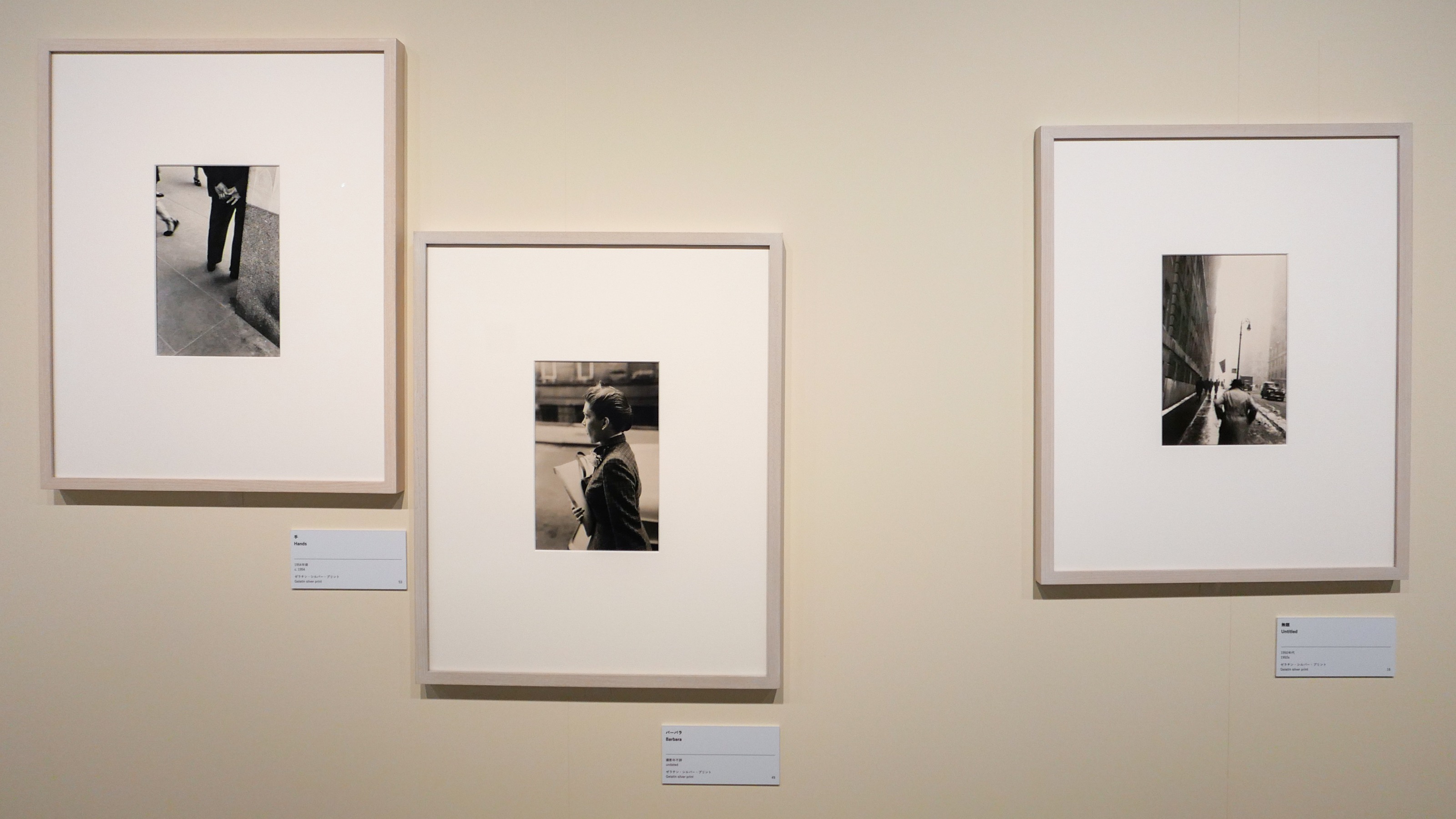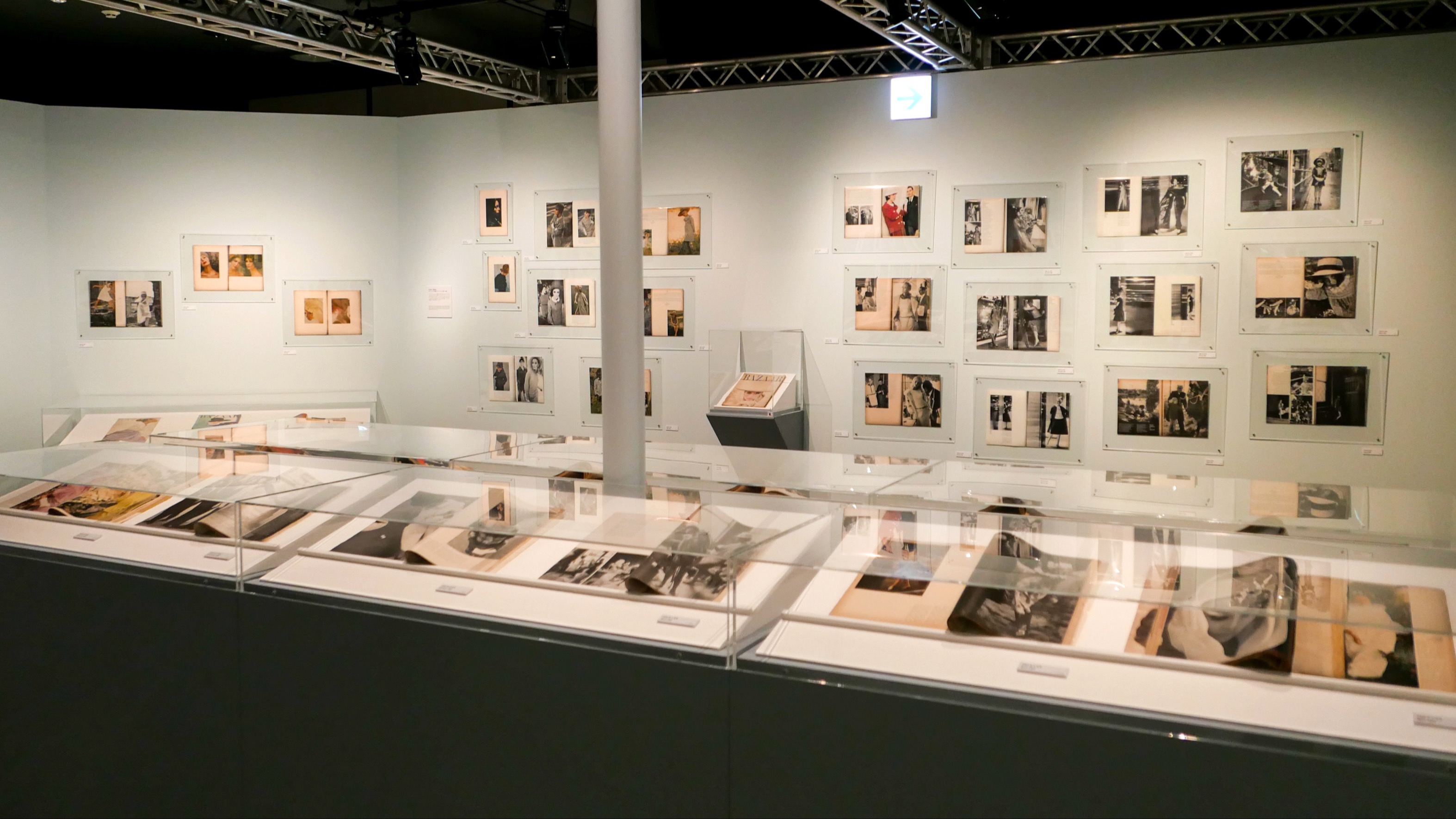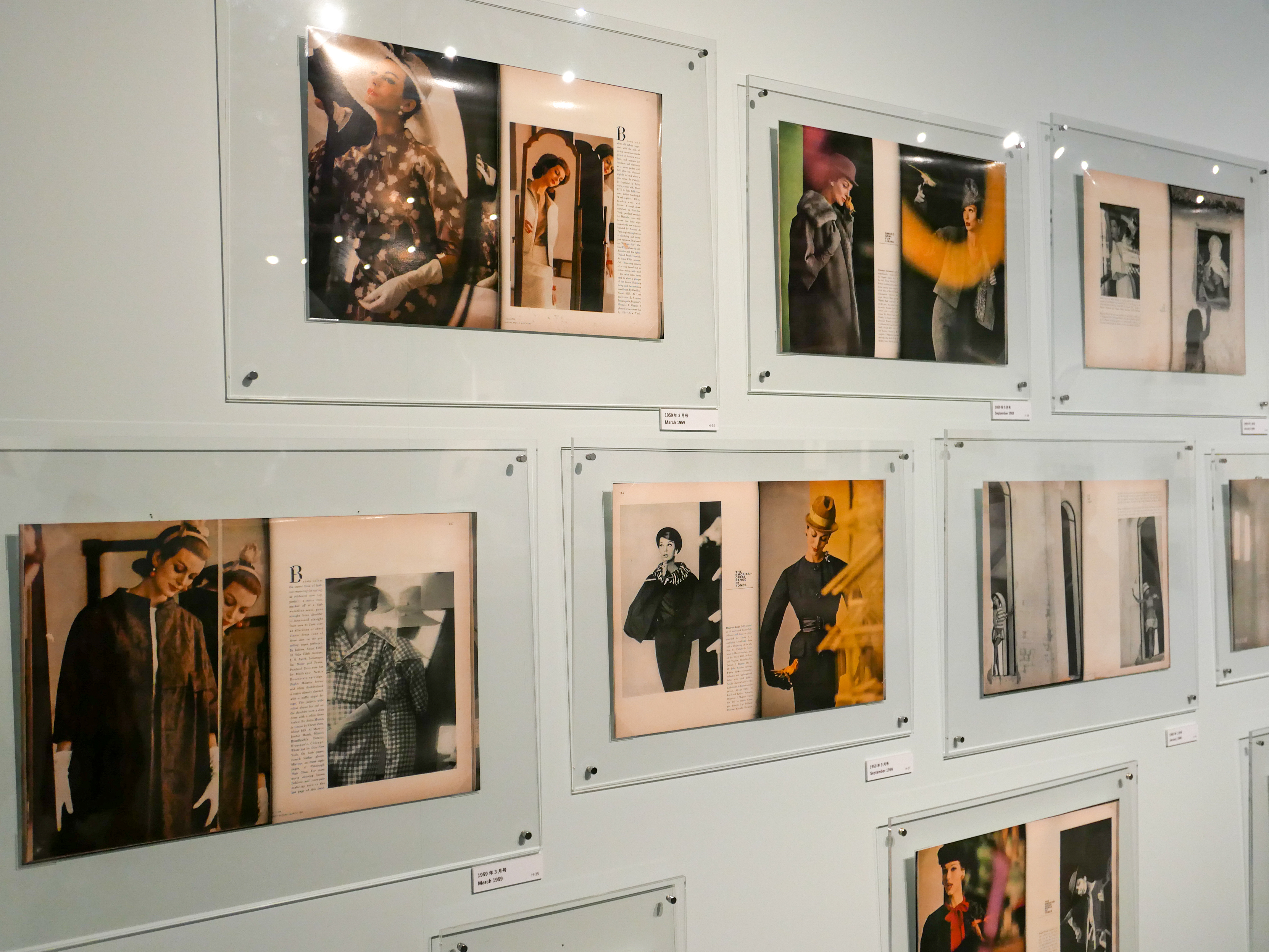Once Again, Saul Leiter: Origins in Color and Streets of New York
“Saul Leiter: Origins in Color” at the Shibuya Hikarie Hall Exhibition view, Photo: Alena Heiß
On the occasion of the 100th anniversary of Saul Leiter’s birth, the Bunkamura Museum of Art is hosting the Saul Leiter: Origins in Color exhibition at the Shibuya Hikarie Hall from July 8 to August 23, 2023. This is the third exhibition in the series, following the Photographer Saul Leiter: A Retrospective (2017) and Forever Saul Leiter (2020), which introduced Japanese viewers to the work of a previously unknown photographer and proved to be a great success.

Rediscovery of Saul Leiter
Saul Leiter (1923-2013) was born in Pittsburgh in 1923. His father was a rabbi and a distinguished Talmudic scholar. However, against his father’s wishes, Leiter followed his passion to become a painter and moved to New York City at 22 to pursue his painting career. The painter Richard Pousette-Dart and the photographer William Eugene Smith, whom Leiter met in New York, encouraged him to explore photography, and he soon began taking black-and-white photographs.

Saul Leiter was a leading fashion photographer in New York until he retired from commercial photography in the 1980s. At the age of 80, Leiter, who had never been interested in wealth or fame and always remained true to his aesthetic sense, returned to the public eye with his first photography book, Early Color (2006). This “rediscovery” of Saul Leiter has led to numerous exhibitions and publications.
Leiter’s death in 2013 left much of his work unsorted, but the Saul Leiter Foundation, established the following year, launched a slide project to create a database of his archive. There are tens of thousands of color slides alone, and it is estimated that it will take more than a decade to uncover the full extent of his work. One could say that even after his death, Saul Leiter remains a “developing” artist. With over 400 works, including a large-scale color slide projection of newly discovered works, previously unseen black-and-white photographs, paintings, and other new works, this exhibition reveals the full scope of the work of the pioneer of color photography.

Reflections of New York and the new art scene
The exhibition’s first section is devoted to Saul Leiter’s previously unpublished monochrome photographs from the 1950s and 1960s. Shortly after World War II, New York was the epicenter of a new wave of art that challenged Europe’s dominance as the center of the art world. Leiter, who arrived in town to pursue his dream as a painter, sought a new creative environment. Surrounded by ambitious young artists amid the Abstract Expressionist movement, he was inspired to explore his vision through camera and canvas.

Leiter’s first camera was a small Detrola his mother bought him when he was a teenager, but his photographic side fully bloomed in New York. Painter Richard Pousette-Dart was Leiter’s friend and mentor, guiding him in the technical aspects of photography and darkroom techniques. Most of the photographs in the exhibition were taken in and around his East Village neighborhood. Already in his early photographs, viewers can see the iconic and unique compositions conveying Leiter’s emotions and thoughts.

A special section is devoted to portraits of artists with whom Saul Leiter came into contact during the period of his black-and-white photography. During the war, numerous avant-garde artists fled to the United States to seek refuge from the Nazi regime. The art scene young Saul Leiter strove to join was amid a significant shift from the Old World to the New World. Notoriously, the East Village was home to many artists because it offered affordable rent to newcomers. Drawn to the area, Saul took spontaneous and unplanned portraits of fellow artists, as he did in his street series. On view are rare portraits of a young Andy Warhol, Diane Arbus, Eugene Smith, Thelonious Monk, Merce Cunningham, John Cage, Robert Rauschenberg, and other significant art figures.


Saul Leiter on the pages of fashion magazines
For an aspiring artist, the city of New York is welcoming but harsh. Faced with the practical challenge of making a living, Saul Leiter saw a solution in photography. Photographer William Eugene Smith played a crucial role in his career, as he recognized Leiter’s potential and connected him with the right people, resulting in his work being published in magazines such as Life. Later, Leiter caught the attention of Esquire magazine’s art director, Henry Wolf, who became the art director of Harper’s Bazaar in 1958. Leiter remarked, “I had the hope that the result would look like a photograph rather than a fashion photograph,” and indeed, his fashion photography highlights his unique style of composition with reflective surfaces or “accidental” shots that caught the models off guard.

At the time, It was common for magazines not to return original positive films to photographers. As a result, many of Leiter’s fashion photographs are not part of his archive. This exhibition section traces his career as a fashion photographer by displaying real magazines and clippings.


Photographer with a painter’s eye
Leiter’s photography earned him international recognition, but he was always a painter at heart. Exhibition planner Masako Sato (Contact Co., Ltd.) explains, “Black and white photography was standard at the time, but Leiter made no distinction between monochrome and color photography. Perhaps because the origins of his photographs lay in the paintings.”


Leiter never put down his paintbrush and continued to paint as if keeping a diary, even after he retired from the public eye. He was strongly influenced by the Impressionists, Japanese Ukiyo-e, and especially the Naviste School of Pierre Bonnard and Édouard Vuillard, who he had long admired. The paintings are displayed alongside the photographs from the “Centennial Selection,” which the Saul Leiter Foundation selected to commemorate the 100th anniversary of his birth.

Neverending discoveries in color
Leiter began experimenting with color shortly after moving to New York. This was also when color film began gaining popularity in the United States. However, the color photographs were typically viewed as color-positive slides rather than prints. In addition, color photography was seen as a commercial tool rather than an artistic medium and was primarily used in advertising and publishing.

An enormous amount of color slides were found in Saul Leiter’s apartment after his death in 2013. He didn’t print many, usually viewing them in lightboxes or projected on walls. The last part of the exhibition is composed of a large-format projection of approximately 250 slides, most of which have never been published before. Viewers are invited to take a seat and enjoy the vibrant world of Leiter’s photography to the sound of the slide projector.

“I've sometimes thought I would have been a better photographer if I were not a painter. And then sometimes I've thought. Well, maybe if I were not wasting my time doing photography maybe I'd be a better painter. But in the end I did both.” (Quote by Saul Leiter, from the “Saul Leiter: Origins in Color”)
Even when color photography was considered artistically worthless, Leiter, always true to his aesthetic vision, found beauty and depth in the color images. His remarkable sense of color has captivated the public and earned him the title “pioneer in the art of color photography. Perhaps his photographs are loved by so many because they speak not only to photography lovers but directly to the viewer’s heart. Once again, Saul Leiter’s photography is on display in Shibuya, and once again, it is bound to enchant many hearts.

Alena Haisaki
Alena Haisaki



